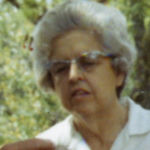Alexander Wetmore

#20,679
Most Influential Person Across History
American ornithologist and avian paleontologist
Alexander Wetmore's AcademicInfluence.com Rankings
Download Badge
Biology
Alexander Wetmore's Degrees
- Bachelors Zoology University of Kansas
- Masters Zoology University of Kansas
Why Is Alexander Wetmore Influential?
(Suggest an Edit or Addition)According to Wikipedia, Frank Alexander Wetmore was an American ornithologist and avian paleontologist. He was the sixth Secretary of the Smithsonian Institution. He was also an elected member of both the American Philosophical Society and the United States National Academy of Sciences.
Other Resources About Alexander Wetmore
What Schools Are Affiliated With Alexander Wetmore?
Alexander Wetmore is affiliated with the following schools:
What Are Alexander Wetmore's Academic Contributions?
Alexander Wetmore has made the following academic contributions:
